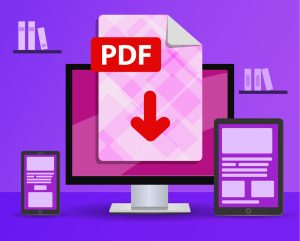How to Make PDFs ADA Compliant
Your website is accessible and ADA compliant, but what about your PDFs? If you have any PDFs on your website they may not be fully accessible. If you are striving to make your website inclusive to people with all different kinds of abilities, you will want to ensure the PDFs are also accessible.
Some of the ways to make PDFs accessible are the same as making your website accessible. These include using high contrasts, specific fonts, and not referring to information solely by color. For example using text such as “refer to the red graph” would confuse those who may not be able to see color clearly. However, PDFs have some different attributes than websites that need special attention to make them accessible.
PDFs are unique in that while they often feature text, the files can act more like a picture. This can make it very difficult for people using assistive technology such as screen readers to access the information. There are a few steps you can take to make sure everyone can retrieve all of the information.
Using Tags
One way to offer accessibility is to make sure that tags are included when you save the file as a PDF. Many settings are already set to tag your document by default when you export a document to a PDF. You can check in the settings in your word processor, typically in advanced options, to ensure that tags are turned on when you export your document.
Alt Text
Alt text is hidden text that screen readers can use to describe graphics in words. Important images such as graphics, tables, and logos that add information to the overall document should have alt text briefly describing them. If a picture is simply decorative, you can write “decorative” in the alt text. There is no way to see if a completed document has alt text, but you can add alt texts to documents as you create them. In Microsoft Word simply right click the image and choose “edit alt text”. If you are creating in Adobe, it is a little more complicated. You will need to choose it from the preferences drop down menu in pane where you view tags.
Searchable Text
You will want to ensure that your PDF has searchable text. If text was imported as a graphic or image it will not be searchable. However, you can either use alt text to include the text in the image. You can also use a tool in Adobe Acrobat. In the tools drop down menu you can choose “recognize text.” Then click “In This File” and select “PDF Output Style Searchable Image.” Then save your document and you will now have searchable text.
Worth The Effort
If your website includes longer documents such as manuals, or even if you just included a PDF flier on your website, you should do everything you can to make it accessible. You don’t want to cut off important clients and potential clients from critical information found in PDFs. You don’t want anyone to feel like they are being excluded from the full experience of your website. It only takes a few easy steps to ensure that your PDFs are inclusive. It is worth the extra time.



